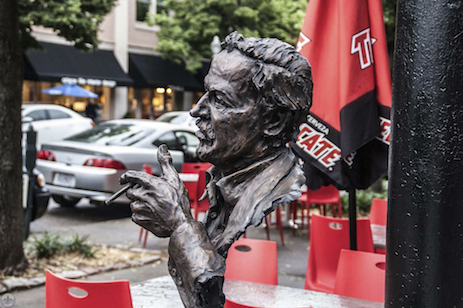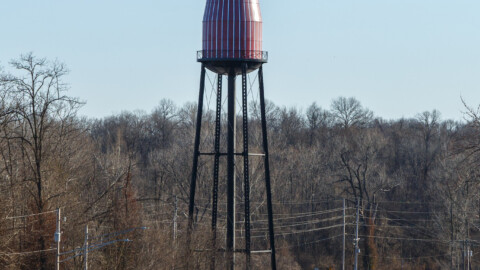photograph by Jeni Kulka
The Central West End is a historically significant neighborhood with an eclectic commercial district surrounded by luxurious private residences. The Cathedral Basilica of St. Louis (housing the world’s largest collection of mosaic inlays), Chase Park Plaza (an opulent, jazz era hotel), and the World Chess Hall of Fame (featuring the world’s largest chess piece) all call this photogenic neighborhood home. It’s no wonder then that, through good times and bad, CWE has remained STL’s neighborhood of distinction for over one hundred years.
photograph by Mandi Gray
photograph by Ann Aurbach
photograph by Janet Henrichs
photograph by Patrick Gioia
The few decades after the American Civil War expressed significant change to the urban landscape of St. Louis. Notably, the 1876 foundation of Forest Park on the city’s western fringe drew development towards it. Many of the Central West End’s first residents recognized the economic opportunities presented by the new public park, and because the land was still primarily open, they were able to construct exclusive private places, which were more opulent and with less city intervention than the ones they were leaving behind, near Downtown, in Lafayette Square, or in Compton Heights. Furthermore, because these private places were new, the prejudices that restricted newly wealthy families (especially those of German or Irish descent) from owning manses alongside the city’s older French families were virtually nonexistent. That said, both the newly wealthy and those already established shared concerns about the privacy of their residences. They wanted urban proximity, but to be protected from everything represented by the less fortunate masses (things like crime, population density, disturbances from noise/loitering/traffic, etc.). To allay these fears, the Central West End was constructed primarily as a system of private places and cul-de-sacs. Although similar in that they both restrict easy access, a private place differs from a cul-de-sac in that it is managed, save for police, fire and trash services which are provided by the municipality, by a Board of Trustees (consisting of residents). As one might expect, private places tended to offer greater exclusivity and more lavish dwellings, and many of the Central West End’s representations, with impressive homes designed by prominent local architects, are protected as a National Historic District today. Additionally, the area’s first investors constructed luxury hotels and apartments surrounding their properties to further insulate the neighborhood. Time and its passage have brought little change to how the neighborhood operates. That said, the greatest affront to the Central West End came not from intrusion, but from factors further afield.
“Evolution is the vehicle of intricacy. The stability of simple forms is the sturdy base from which more complex forms might arise, forming in turn more complex forms, and so on.” -Annie Dillard, Pilgrim at Tinker Creek
photograph by Mandi Gray
photograph by Theresa Harter
photograph by Ann Aurbach
photograph by Jason Gray
In 1877, St. Louis City seceded from St. Louis County, in part to prevent city tax revenue from being squandered on rural infrastructure (at this time, it was mistakenly thought that the city would not need to ever expand beyond its current border, and that the County would ever remain as an agrarian hinterland). In 1891, the state approved the construction of Boulevards, such as Delmar (which forms the northern boundary to the Central West End), to connect downtown St. Louis to development in the County, west of the city’s border. The wide streets helped to cement the popularity of CWE, but also supplied municipalities outside of the city, like University City and Clayton, with arteries to support their own rapid growth of industry and commerce.
photograph by Siobhan Lestina
photograph by Siobhan Lestina
photograph by Theresa Harter
photograph by Janet Henrichs
After World War II, the population of St. Louis began to decline significantly, attributable to the movement of residents, primarily white, out of the city and into the suburbs. The construction of interstates through the region, and the ease of transportation brought about by the now ubiquitous automobile, enabled such changes to occur. That St. Louis City had severed itself from St. Louis County a century before, meant that it had no capacity to meet the demands of a sprawling population. Like other Rust Belt cities experiencing similar crisis, St. Louis sustained significant decay, and this impacted communities like the Central West End. Many of the neighborhood’s wealthiest families moved to the County (following their businesses) and into truly palatial properties. Throughout the 1970’s and 1980’s, the neighborhood languished, albeit not to the degree of other city neighborhoods. When St. Louis seceded from it’s county in 1877, the population ratio of St. Louis City to St. Louis County was roughly 10:1; today it is about 1:3, in favor of St. Louis County.
photograph by Theresa Harter
photograph by Jeni Kulka
photograph by Mandi Gray
Still, the residents of the Central West End are a dedicated lot, and due largely to their tireless efforts, the neighborhood is again thriving. As the city at large continues to revitalize and usher in new opportunities, the Central West End is situated to profit substantially, thanks in part to the foresight of its founding families and in part to a remarkably intuitive and proactive neighborhood association. Businesses continue to relocate here, including the first Whole Foods Market within the city limits, and the commercial corridor along Euclid Avenue remains especially vibrant with cafes, restaurants, boutiques, galleries and more. All of this is certain to indicate that luminaries of every type will continue to populate the neighborhood, a tradition consistent with that of its past when individuals like Joseph Pulitzer, T.S. Eliot, and Tennessee Williams all called the Central West End home.
photograph by Dan Henrichs Photography, St. Louis
photograph by Jason Gray
photograph by Theresa Harter
photograph by Patrick Gioia
Map (note, due to the neighborhood’s size, it will be divided into two separate Photo Floods; the area below represents the first):
End point:
Our, final stop for Photo Flood 11 was the fantastic PI Pizza. I lived in Chicago for ten years, so I feel that I can say this with some authority, PI’s deep-dish is better than anything you’ll find in the Windy City (and that is saying A LOT).
photograph by John H. from Yelp.com






























[…] place in the international community, and the current “Chess Campus” in the Central West End neighborhood is an extension of this […]
Loved seeing this spread on the neighborhood in which I live! Beautiful representation! PS … the modern outdoor light with rays spreading out over white brick is our house! 🙂 And, Mandi, the photo of the reflection of the Basilica in a puddle is awesome! Good work to all!
[…] west. Indeed, this migratory plan did work, resulting in wonderful urban neighborhoods like the Central West End, DeBaliviere Place, and more. Unfortunately, once the population reached the city’s borders, […]